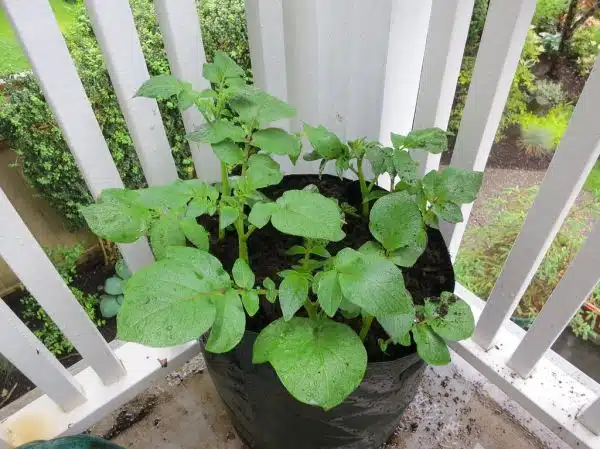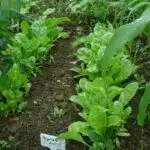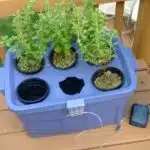Grow bags are becoming increasingly popular for gardening enthusiasts due to their convenience and affordability. These lightweight and portable bags are made of various materials such as fabric, plastic, or paper, and come in different sizes to accommodate various plants. They are attractive options for urban gardeners who have limited space and want to grow vegetables or flowers on balconies, rooftops or patios.
Despite the convenience offered by grow bags, they also come with several drawbacks that gardeners should consider before investing in them. In this article, we will explore the pros and cons of using grow bags for gardening. We will discuss the benefits of grow bags such as their portability, ability to promote root aeration and drainage, as well as limitations such as the need for frequent watering and fertilization. By examining both sides of the issue, readers can make informed decisions about whether grow bags are right for their gardening needs.
Material Options For Grow Bags
As a grow bag expert, one of the most critical factors to consider when selecting a grow bag is the material used in its construction. Grow bags are made from various materials that offer different benefits and drawbacks. Among the recyclable options available in the market today are those made from natural materials like jute, coconut coir, and burlap. These materials are eco-friendly and biodegradable, making them an excellent choice for gardeners who prioritize sustainability.
However, durability concerns arise with the use of these natural materials. They tend to break down quickly, especially when exposed to moisture and sunlight. This can compromise the integrity of the grow bag and cause it to disintegrate over time. A grow bag that does not last long will require frequent replacements, which can be both costly and inconvenient for gardeners looking for a long-term solution. As such, gardeners must weigh the pros and cons of using recyclable options before making their final decision.
Another popular option is synthetic materials like polypropylene or PVC. These types of grow bags are incredibly durable and resistant to heat, water, and UV rays. They also come in a variety of colors and sizes, making them ideal for gardeners looking to add some aesthetic appeal to their gardens. However, synthetic materials are not eco-friendly or biodegradable, which can be a deal-breaker for environmentally-conscious gardeners seeking sustainable solutions.
Sizes And Shapes Of Grow Bags
As we have discussed earlier, grow bags come in various materials, each with their own set of advantages and disadvantages. However, before deciding on the material, it is essential to consider the customization options that are available with grow bags. Grow bags can be customized according to your specific needs and preferences, such as adding drainage holes, handles for easy movement, or even creating a self-watering system. This makes grow bags an excellent choice for those who want to experiment with different growing techniques.
Apart from customization options, choosing the ideal size of a grow bag is crucial for successful plant growth. Grow bags come in various sizes and shapes suitable for different plant species. If you plan on growing smaller plants like herbs or lettuce indoors, then smaller-sized grow bags would suffice. On the other hand, if you are looking to cultivate larger plants like tomatoes or peppers outdoors, then you should opt for bigger grow bags with enough space for root growth.
In conclusion, customization options and ideal sizes are significant factors to consider when selecting a grow bag suitable for your gardening needs. However, there are still some other aspects worth considering like portability and versatility that can enhance your gardening experience further. Let’s explore these features in-depth in the following section without any delay.
Portability And Versatility
Grow bags offer a unique combination of portability and versatility, making them an excellent option for gardeners who want flexibility in their planting options. One of the primary advantages of grow bags is their mobility, which allows gardeners to move plants around as needed. This feature makes grow bags ideal for those who live in areas with limited space or who want to maximize their growing potential.
Another advantage of grow bags is their creative planting options. Gardeners can use a variety of plant types in grow bags, including herbs, vegetables, and flowers. Grow bags also come in different sizes and shapes, allowing gardeners to experiment with different layouts and designs. Additionally, because grow bags are made from flexible materials like fabric or plastic, they can be easily shaped to fit into tight spaces or unusual areas.
While grow bag durability varies depending on the type and quality of the bag, most are designed to last several seasons. Optimal plant types for grow bags include those that do not require deep roots or extensive support systems. Some popular examples include tomatoes, peppers, herbs, and strawberries. By selecting plants that thrive in these conditions, gardeners can maximize the benefits of using grow bags while minimizing any potential drawbacks.
As we will discuss in the subsequent section about improved root aeration, another key benefit of using grow bags is their ability to promote healthy root growth through increased air circulation. As such, it is important to consider factors like soil quality and drainage when choosing a specific type of grow bag. By taking these factors into account along with considerations like plant type and mobility needs, gardeners can create a highly effective and efficient growing system using this versatile tool.
Improved Root Aeration
Aerated soil is key for successful root growth, as the water and air that it contains allows for better oxygenation of the root system. Air pruning is a method used to prevent roots from becoming bound in the soil, which can otherwise impede the growth of the plant. Grow bags are an effective way of providing aeration, as their porous surface and light weight allows for better air and water circulation. However, it is important to note that grow bags need to be regularly checked for drainage and soil quality, as they dry out more quickly than traditional soil.
Aerated Soil
When it comes to growing plants in containers, the quality of soil used can make all the difference. Grow bags have gained popularity among gardeners due to their convenience and affordability. However, unlike traditional pots, grow bags require a different type of soil that has better drainage and root aeration. This is where DIY aerated soil comes into play.
Aerated soil is created by mixing traditional potting soil with materials such as perlite, vermiculite, or coconut coir that provide better air pockets in the soil. This allows roots to breathe easily and promotes healthy growth. The benefits of aeration for plant growth are numerous – it helps prevent root rot, improves nutrient uptake, and enhances overall plant health.
One advantage of using DIY aerated soil in grow bags is that it can be customized based on the type of plants being grown. For example, vegetables require more nutrients than herbs or flowers and may need additional amendments added to the mix. Additionally, creating your own aerated soil can be cost-effective compared to buying pre-made mixes from garden centers. Overall, incorporating aerated soil into grow bag gardening can lead to healthier plants and higher yields for both experienced and novice gardeners alike.
Air Pruning
Another method for improving root aeration in grow bags is through the process of air pruning. Air pruning involves the use of specially designed containers that have small openings or holes on the sides. These openings allow for air to flow through the container and reach the roots, which stimulates growth and prevents them from becoming root-bound.
The benefits of air pruning are numerous. For one, it promotes healthier root growth by preventing circling roots that can strangle each other and limit nutrient uptake. Additionally, plants grown in air-pruned containers tend to develop stronger root systems, which translates to better overall plant health and higher yields. Another advantage of air pruning is that it allows for more efficient use of space as plants can be grown closer together without fear of overcrowding.
However, there are also some drawbacks to consider when using air pruning containers. One potential issue is moisture retention – because these containers allow for more airflow, they may also dry out faster than traditional pots or grow bags. This means that gardeners need to be vigilant about watering their plants regularly to prevent dehydration. Additionally, air-pruning containers may not be suitable for all types of plants, particularly those with delicate root systems that may become damaged when exposed to excessive airflow.
Overall, air pruning offers an innovative solution for promoting healthy root growth in container gardening. While there are some potential drawbacks to consider, the benefits – including improved nutrient uptake and higher yields – make it a worthwhile technique for experienced gardeners looking to take their grow bag gardening skills to the next level.
Better Drainage For Plants
As any seasoned gardener will tell you, proper drainage is absolutely critical for healthy plants. Without it, roots can rot and the entire plant may suffer. Fortunately, there are many ways to ensure that your plants have the right amount of water and oxygen in their soil. One popular method is to use grow bags with superior drainage properties.
Grow bags are designed to allow excess water to drain away from the plant’s roots, preventing them from becoming waterlogged and rotting. However, even with a quality grow bag, it’s important to keep an eye on moisture levels to ensure that your plants aren’t drying out too quickly or retaining too much water. DIY drainage solutions such as adding extra holes or using gravel at the bottom of your bag can help improve drainage further.
Another option for those looking for even more control over their plant’s moisture levels is hydroponic gardening. This cutting-edge method involves growing plants without soil by suspending them in nutrient-rich water solutions. Hydroponics can be a bit more complicated than traditional methods of gardening but offers many benefits, including faster growth rates and higher yields.
Whether you opt for a simple grow bag or experiment with hydroponic alternatives, ensuring proper drainage is key to healthy plant growth. With these techniques at your disposal, you’ll be well on your way to cultivating a thriving garden filled with lush greenery and vibrant flowers – all while saving money with this cost-effective gardening option.
Cost-Effective Gardening Option
When it comes to gardening, many people are always looking for cost-effective options. This is where grow bags come in handy. Compared to traditional gardening methods, grow bags offer a more budget-friendly approach that can save you money in the long run. While there are some DIY alternatives that you can opt for, using grow bags is an excellent option if you’re looking for a durable and long-lasting solution.
One of the main advantages of using grow bags is that they’re reusable. Unlike traditional pots or containers, which may require regular maintenance or replacement due to wear and tear, grow bags can last several years without showing any signs of damage. As such, investing in a set of high-quality grow bags will not only save you money but also give you peace of mind knowing that your plants are growing in a safe and healthy environment.
Grow bags are also an excellent choice for those who want to garden but have limited space. They take up less room than traditional pots and containers and can be placed on balconies or small patios. With their ability to retain moisture while providing good drainage, they create an ideal growing environment for plants that thrive in small spaces. In the next section, we’ll explore how grow bags allow individuals with limited space to cultivate their own produce right at home without needing a large outdoor area.
Ability To Grow Plants In Limited Space
Cost-effective gardening is a great way to save money on your grocery bill while also experiencing the satisfaction of growing your produce. However, many people are limited in space and cannot afford to have traditional gardens. Luckily, vertical gardening and container gardening are two popular methods for growing plants in limited space. Grow bags are an excellent option for these types of gardening due to their portability, versatility, and cost-effectiveness.
One of the significant advantages of using grow bags is that they allow gardeners to create a vertical garden with ease. By stacking the bags on top of one another, you can utilize your limited space efficiently. Additionally, unlike traditional pots or containers, grow bags do not require any additional support structures such as trellises. They also provide better drainage than other types of containers, which helps prevent root rot and other soil-borne diseases.
Another advantage of using grow bags is that they are an eco-friendly option for container gardening. Unlike plastic pots or containers which take hundreds of years to degrade in landfills, grow bags are made from biodegradable materials such as jute or coconut coir. These materials break down quickly once discarded and do not contribute to environmental pollution. Additionally, many manufacturers use recycled materials to make their grow bags, further reducing their ecological footprint.
In conclusion, if you’re looking for a cost-effective and environmentally friendly option for container gardening within a small space, then look no further than grow bags. These portable and versatile planters offer several benefits such as vertical gardening capabilities and better drainage than traditional pots or containers. Plus, they’re an eco-friendly choice that won’t harm the environment when it’s time to dispose of them.
Environmentally Friendly Option
Eco friendly alternatives to traditional plastic grow bags are gaining popularity as sustainability practices become more prevalent. Grow bags made from materials such as biodegradable fabric or recycled plastic are becoming common options for gardeners who want to reduce their environmental impact. These bags have a lower carbon footprint and can be reused or composted, reducing waste and pollution.
Biodegradable fabric grow bags are an excellent choice for eco-conscious gardeners as they break down naturally without leaving any harmful residues. They also provide good drainage and air circulation, which is crucial for healthy plant growth. On the other hand, recycled plastic grow bags are durable, long-lasting, and can be reused multiple times before being recycled again.
In conclusion, using eco-friendly alternatives such as biodegradable fabric or recycled plastic grow bags is an excellent way to reduce your environmental impact while still enjoying the benefits of container gardening. Sustainability practices should be at the forefront of everyone’s minds when it comes to gardening and agriculture. In the subsequent section, we will discuss how these alternatives can help with another important aspect of container gardening: the need for frequent watering.
Need For Frequent Watering
Watering frequency is an important consideration when using grow bags. Due to their limited volume, grow bags tend to dry out more quickly than traditional planters. As a result, they require frequent watering to maintain the appropriate soil moisture levels. The frequency of watering will depend on several factors, such as the size of the bag, the type of plant, and the environmental conditions.
To prevent overwatering or underwatering, it’s crucial to monitor the soil moisture regularly. One way to do this is by sticking your finger about an inch into the soil. If it feels dry at that depth, it’s time to water. However, if it still feels moist, you can wait a little longer before watering again. It’s important not to let the soil dry out completely as this can damage your plants.
In addition to watering frequency, proper drainage is also essential for maintaining adequate soil moisture in grow bags. Make sure that there are sufficient drainage holes at the bottom of your bag and that excess water can drain away freely. This will help prevent waterlogging and ensure that your plants have access to enough oxygen for healthy growth. In summary, watering frequency and proper drainage are critical considerations when using grow bags for gardening purposes.
Proper fertilization is just as important as watering frequency and soil moisture when using grow bags for planting. By providing your plants with essential nutrients through regular fertilization, you can promote healthy growth and maximize yields. In the next section, we’ll discuss how to choose the right fertilizer for your plants and how often you should apply it for optimal results.
Importance Of Proper Fertilization
Symbolism is a crucial component of proper fertilization in grow bags. Just as a plant needs water and sunlight to thrive, it also requires the appropriate nutrients to grow and produce fruits or vegetables. Benefits of fertilization include promoting root development, improving soil fertility, and increasing yield. However, there are also drawbacks to fertilizing in grow bags that should be considered.
One potential drawback is over-fertilization. Too much fertilizer can lead to excess salt buildup in the soil, which can harm plants by interfering with nutrient absorption. Additionally, some fertilizers may contain harmful chemicals that can harm both the environment and human health. Therefore, it is important to choose organic or natural fertilizers whenever possible.
Another concern with fertilization in grow bags is the potential for nutrient leaching. Over time, nutrients may be washed out of the soil and into surrounding water sources if not properly maintained. This not only wastes valuable resources but also contributes to pollution in the environment.
Overall, while proper fertilization is essential for healthy plant growth and production in grow bags, it is important to carefully weigh the benefits and drawbacks before choosing a specific fertilizer. Organic or natural options are often preferred due to their lower risk of negative environmental impacts and potential health hazards associated with chemical-based alternatives. In addition, regular maintenance practices such as monitoring soil pH levels can help ensure optimal nutrient availability without risking over-fertilization or leaching.
As we consider various factors affecting plant growth in grow bags, another critical element for success is susceptibility to temperature fluctuations.
Susceptibility To Temperature Fluctuations
Understanding the impact of temperature on plant growth is critical when using grow bags. Fluctuating temperatures can greatly affect the health and productivity of plants. Plants thrive in a specific temperature range, and any deviation from this range can lead to stunted growth or even death. In grow bags, temperature fluctuations are common due to their portable nature and susceptibility to environmental changes.
Tips for managing temperature fluctuations in grow bags include several key strategies. First, it is important to monitor the temperature regularly. This can be done using a thermometer placed inside the bag or by simply feeling the soil’s temperature with your hand. Secondly, consider moving the grow bag to a location that offers more stable temperatures, such as indoors or in a sheltered area outdoors. Additionally, adding an insulating layer around the grow bag can help regulate temperature fluctuations.
Understanding how to manage temperature fluctuations in grow bags is crucial for successful plant growth. By taking proactive measures, you can help ensure that your plants thrive despite external factors like weather changes. With proper attention paid to these details, you can enjoy healthy crops and bountiful harvests from your grow bags year-round.
As we’ve seen so far, there are both benefits and challenges associated with using grow bags for plant cultivation. While they offer portability and ease of use, they also require careful attention to factors like water retention and temperature control. The next section will explore another limitation of grow bags: their limited lifespan and what this means for long-term plant cultivation strategies.
Limited Lifespan Of Grow Bags
As a grow bag expert, I cannot help but chuckle at the short lifespan of these bags. It is almost as if they are designed to be disposable like a paper cup or plastic utensils. But let’s face it, in today’s world, we need long term sustainability and alternative options for our gardening needs.
Grow bags typically last for one to two growing seasons before they start to break down and become ineffective. This may not seem like a big deal for those who only use them occasionally or for small scale gardening projects. However, for those who rely on grow bags as their primary method of growing plants, this can become quite costly and unsustainable in the long run.
Fortunately, there are alternative options available that offer greater durability and longevity than traditional grow bags. Fabric pots made from durable materials such as geotextile fabric or recycled plastic bottles can last up to five years or more with proper care. These pots also provide better drainage and air circulation for plant roots, resulting in healthier growth and higher yields. So why settle for a short-lived solution when there are better options out there?
While the limited lifespan of grow bags may be a turnoff for some gardeners, it is important to remember that not all plant types require extended periods of growth. Some plants thrive in short cycles and can be harvested within just a few weeks of planting. In the next section, we will explore how compatibility with certain plant types plays a role in determining whether grow bags are the right choice for your gardening needs.
Compatibility With Certain Plant Types
Grow bags offer a unique solution for gardeners who wish to grow plants in a limited space. Drainage must be carefully considered when using grow bags, as the enclosed environment may cause water to pool and damage the roots of the plant. The soil type used in a grow bag must also be carefully selected, as the lack of oxygen and nutrients may stunt the growth of the plant. Therefore, it is important to consider the drainage and soil type when deciding on a grow bag to ensure the plant’s health.
Drainage
For gardeners and farmers, plant growth is an important factor to consider when choosing a grow bag. Proper drainage is one of the essential requirements for healthy plant growth. Poor drainage can lead to water retention in the soil, which can cause soil compaction and root rot.
When it comes to grow bags, proper drainage is one of their most significant advantages. Grow bags are designed with small holes that allow excess water to drain out of the bag quickly. This feature prevents water from accumulating at the bottom of the bag, which can lead to soil compaction and poor root development.
Grow bags are also suitable for plants that require excellent drainage, such as succulents and cacti. These plants need a well-draining growing medium to prevent root rot and encourage healthy root development. Grow bags provide an optimal environment for these plants by allowing excess water to escape while retaining enough moisture for plant growth. Overall, if you’re looking for a container that will promote good drainage and support healthy plant growth, grow bags are an excellent choice.
Soil Types
Different soil types can greatly affect plant growth and health. While some plants thrive in certain soil types, others may struggle to grow or even die. Grow bags are versatile containers that can be used to grow plants in unconventional soil types, such as sandy or clay soil. However, it is essential to understand the benefits and drawbacks of different soil types when choosing a grow bag for your plants.
Sandy soil is known for its excellent drainage but lacks nutrients required for healthy plant growth. Clay soil, on the other hand, retains moisture and nutrients but has poor drainage. Grow bags offer an advantage by allowing gardeners to choose their preferred growing medium and adjust accordingly for each plant’s specific needs. For instance, adding compost or organic matter to sandy soil can improve its nutrient content while mixing sand with clay soil can enhance drainage.
Growing plants in unconventional soils using grow bags has numerous benefits, including reduced water usage and space-efficiency. Additionally, it allows gardeners to experiment with different growing mediums without committing to a large area of land or raised beds. By understanding the benefits and drawbacks of different soil types, gardeners can choose the best grow bag for their plants’ specific needs and promote healthy plant growth.
Comparing Grow Bags To Other Planting Methods
Compatibility with certain plant types is an important consideration when choosing grow bags as a planting method. Grow bags are suitable for most plants, including vegetables, herbs, flowers, and small trees. However, certain plants require more space for root growth and may not thrive in grow bags. For example, deep-rooted plants like carrots and parsnips may not perform well in shallow grow bags.
Comparing grow bags to other planting methods is essential to determine the advantages and disadvantages of using this technique. Compared to traditional gardening methods, grow bags offer several benefits. First, they are portable and can be easily moved around the garden or balcony to optimize sunlight exposure. Second, they provide excellent drainage that prevents root rot and soil-borne diseases. Third, they are versatile and can be used in various settings such as rooftops or balconies.
Benefits for urban gardening are significant when using grow bags as a planting method. Urban gardens often face constraints such as limited space, poor soil quality, and lack of sunlight exposure. Grow bags solve these problems by providing a compact solution that requires little space but still allows plants to thrive due to their excellent drainage system. Additionally, urban gardeners can move their grow bags around to follow the sun’s path throughout the day or bring them inside during extreme weather conditions.
In making the decision to use grow bags as a planting method over other traditional gardening techniques, it is crucial to weigh the benefits of each approach carefully. While some plants may not thrive in grow bags due to their shallow root system requirements, there are numerous benefits for urban gardening and portability that make them highly attractive options for many gardeners seeking sustainable gardening solutions.
Making The Decision To Use Grow Bags
As a grow bag expert, it never ceases to amaze me how something as simple as a bag can revolutionize gardening. The benefits of using grow bags are numerous: they are affordable, portable, and require less water than traditional gardening methods. However, like any gardening technique, there are also drawbacks to using grow bags that must be considered before making the decision to use them.
When considering whether or not to use grow bags, it is important to compare them to traditional gardening methods. While traditional gardens allow for more space and flexibility in plant selection, they can also be labor-intensive and require large amounts of water and fertilizer. Grow bags offer a great alternative for those who may not have access to a large outdoor space or want a more low-maintenance option.
Ultimately, the decision to use grow bags comes down to personal preference and individual circumstances. If you are looking for an affordable and portable option that requires less water and maintenance than traditional gardening methods, then grow bags may be the perfect choice for you. However, if you have the space and resources for a larger garden or prefer more control over plant selection and soil composition, then traditional gardening may be the better option.
Frequently Asked Questions
Can Grow Bags Be Reused For Planting In Subsequent Seasons?
When considering the benefits of reusing grow bags for planting in subsequent seasons, it is important to weigh the pros and cons. On one hand, reusing grow bags can be a cost-effective and environmentally-friendly option that eliminates the need for purchasing new bags each season. However, there are also alternatives for disposal such as recycling or composting that may be more sustainable in the long run. As a grow bag expert, it is my recommendation to carefully assess the condition of the bag before deciding whether or not to reuse it. If the bag shows signs of wear and tear or has been used to grow plants susceptible to disease, it may be best to dispose of it properly rather than risk compromising future crops. Ultimately, the decision to reuse a grow bag should take into account both its potential benefits and drawbacks.
Are There Any Specific Plants That Are Not Suitable For Growing In Grow Bags?
When considering growing plants in grow bags, it is important to take into account the unsuitability of certain plant species. Factors such as drainage concerns can limit the types of plants that will thrive in a grow bag environment. For instance, plants with high water requirements may not be ideal for grow bags due to potential issues with water retention and over-saturation. Additionally, large or deep-rooted plants may struggle to establish themselves properly in a confined space such as a grow bag. It is recommended that growers carefully research and select suitable plant varieties before investing in grow bags to ensure optimal growth and yield.
How Does The Cost Of Using Grow Bags Compare To Other Traditional Gardening Methods?
In the realm of gardening, there are various traditional methods that have been practiced for centuries. However, with the advent of grow bags, a new contender has emerged. Cost comparison and environmental impact are two important factors to consider when deciding on a gardening method. In terms of cost, grow bags may be more expensive initially but can save money in the long run as they require less water and fertilizers. Additionally, they are reusable and take up less space than traditional gardens. From an environmental standpoint, grow bags produce less waste and require fewer resources to maintain. While further research is needed to fully understand the benefits and drawbacks of using grow bags compared to other traditional gardening methods, these initial findings suggest that they may be a viable option for those looking for an efficient and eco-friendly way to garden.
Do Grow Bags Require Any Special Care Or Maintenance?
Best practices for caring and maintaining grow bags include ensuring proper drainage, providing adequate water and nutrients, and regular inspection for pests and diseases. Common mistakes to avoid include overwatering or underwatering, using poor quality soil, and not rotating crops. Benefits of using grow bags include their portability and versatility in growing a variety of plants in small spaces. Drawbacks may include the need for frequent watering and potential for the bags to degrade over time. Overall, proper care and maintenance can ensure successful growth in grow bags while minimizing any potential drawbacks.
Can Grow Bags Be Used For Indoor Gardening As Well?
Indoor gardening with grow bags has become increasingly popular due to the benefits they provide. These benefits include reduced soil-borne diseases, better drainage, and improved aeration compared to traditional pots. Grow bags also promote healthier root development and can be moved easily, making it convenient for gardeners to optimize sunlight levels for plants. For successful indoor grow bag gardening, certain tips should be followed such as selecting the appropriate size grow bag, using high-quality potting mix, and ensuring proper watering and fertilization practices. As a grow bag expert or researcher, it is important to note that these tips can significantly improve plant growth in an indoor environment while providing an aesthetically-pleasing display for those who have a desire to serve others through their gardening efforts.
Conclusion
Grow bags have been gaining popularity among gardeners as an alternative to traditional gardening methods. While they offer several benefits, there are also a few drawbacks to consider.
One advantage of grow bags is their portability and flexibility. They can be moved around easily, making them ideal for small spaces or for those who like to rearrange their garden frequently. Additionally, grow bags are known for their excellent drainage and aeration properties, which promotes healthy root growth and prevents waterlogging.
However, there are also some cons to using grow bags. They require frequent watering and fertilization since the soil dries out quickly due to the porous nature of the bag material. Moreover, certain plants may not be suitable for growing in grow bags due to their extensive root systems or heavy nutrient requirements.
Overall, the cost of using grow bags is relatively low compared to other gardening methods such as raised beds or containers. A 10-gallon grow bag typically costs around $2-$3, making it an affordable option for beginners or seasoned gardeners alike.
An interesting statistic about grow bags is that they can increase crop yields by up to 50% compared to traditional planting methods. This is because the roots have more access to oxygen and nutrients in the soil due to the excellent drainage and aeration properties of the bag material. Therefore, if you are looking for an efficient and cost-effective way to grow your plants, consider using grow bags as part of your gardening strategy.
Image Credits
- “Growing potatoes in a bag” by Ruth and Dave (featured)





























